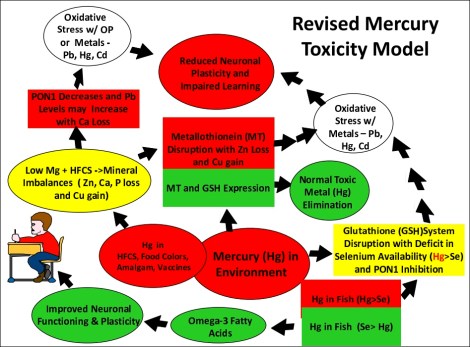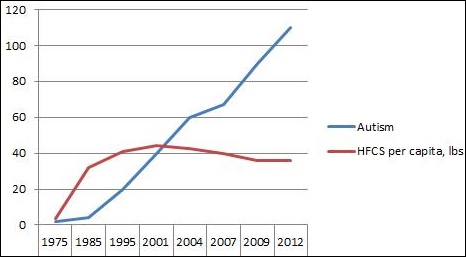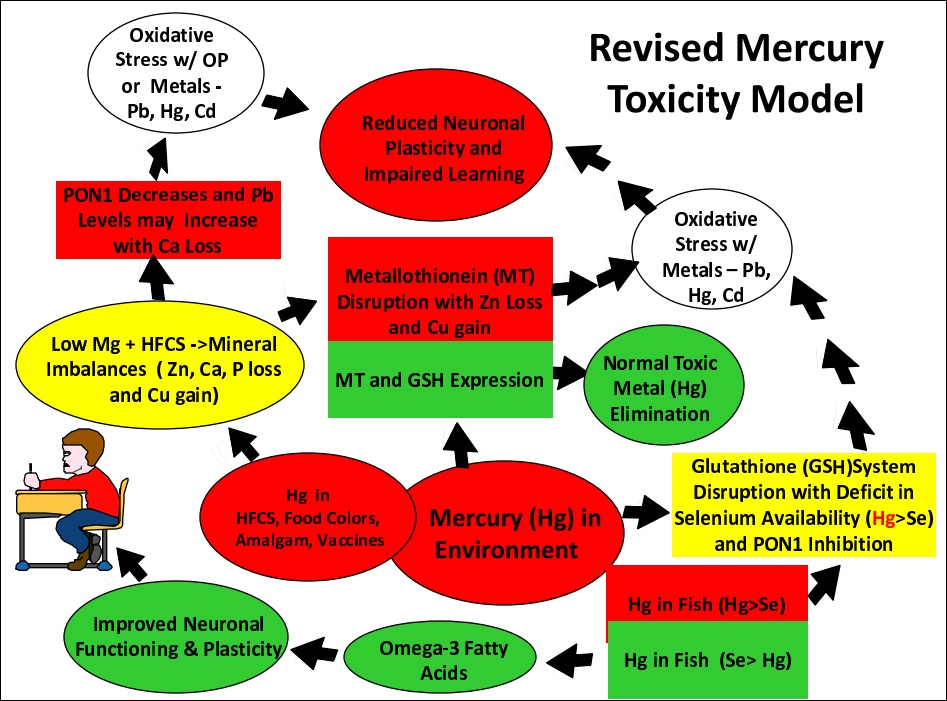Autism is a hot topic these days, and not even peer-reviewed journals can evade being drawn into its gyre. The real reasons for the growth in autism prevalence are related to expanded diagnosis, greater awareness and recognition, and shifts from other special education labels to autism. That hasn’t stopped some researchers and peer-reviewed journals from using autism as a way to grab headlines, and it doesn’t stop anyone from linking just about anything to autism.
Last week, Grist contributor Tom Laskawy took a recent “study” alleging a link between high-fructose corn syrup (HFCS) and autism and highlighted it, calling it “suggestive research” that shifts the HFCS debate in an “unexpected and troubling way.” The paper Laskawy wrote about is troubling, but not in the way that he argues.
Problem No. 1: This isn’t a study. It is, as the abstract itself says and as the journal, Clinical Epigenetics, has labeled it, a review. That means a review of existing literature, not a study, with no original research presented, much less “suggestive” research. In other words, all those headlines — including Grist’s original one, which has now been rewritten — blaring about a “study” finding a “link”? There is no study, and there’s no link or association or relationship established in this paper between autism and HFCS consumption. In fact, as you will see below, the two don’t even share a trend.
The paper’s authors — at least one of whom has laid his colors bare when it comes to the debunked link between vaccines, mercury, and autism — wave several red flags of pseudoscience in their article, which is packed with imprecise, only vaguely scientific terminology. An example is their use of “mercury” as a monolithic threat, writing as though the mercury consumed in fish and linked to cognitive effects — methylmercury — is the same as elemental mercury, the kind that they assert via self-citation to be associated with high-fructose corn syrup.
These forms of mercury, along with ethylmercury, all behave very differently in us, but the paper authors either willfully or ignorantly overlook that well-established fact. For example, we don’t intestinally absorb much ingested elemental mercury but readily take up methylmercury consumed in fish, and the latter has known negative neurological effects if eaten. They also conflate fructose and high-fructose corn syrup in their writing, not seeming to understand the distinction between the two.
The authors go on to describe what they call a “model,” one based on a previous conceptualization they introduced called the “mercury toxicity model.” Again, they seem to have little grasp of the differences among the different mercury-containing compounds, lumping them all together into one giant mercurial threat.
In this review, they expand their “model” to include HFCS. Unfortunately, their assertions of mercury intake via HFCS are also based on their own previous work testing for mercury in HFCS-containing foods, an extremely poorly executed study with gaps so large that even my nonmajors science classes easily identified them. Indeed, an independent assessment from a Duke toxicologist of actual samples of HFCS for mercury, done in response to that study, found “no quantifiable mercury in any of the samples tested” [doc]. In other words, one of the cornerstones of the authors’ argument — mercury in HFCS — is arguably nonexistent.

The house of cards this paper constructs so carefully is a Rube-Goldbergian monstrosity (see their “Revised Mercury Toxicity Model” for an example) that would collapse utterly were a single component removed. But beyond the questionable HFCS-mercury link, let’s take two of the simplest, most obvious, and most necessary of these components, pull them out of the fragile edifice, and watch as it all falls to the ground.
First, the authors devote a great deal of time to presenting special education data for 2005 to 2010, presumably to demonstrate that autism is increasing and, as a corollary that “We don’t know why!” These data are not the best proxy for autism prevalence as they lowball reality, but let’s run with it. The authors claim, based on a basic analysis of these primitive data, that the number of children receiving special education services for autism has increased by 91 percent from 2005 to 2010. The absolute numbers (not prevalences) they give us are 193,637 in the autism category in 2005 and 370,011 in 2010, for a total increase of 176,374 in those five years.
What they fail to note is that much of the increase in autism rates and students receiving services for autism is the result of shifts of students from the intellectual disability and speech disorder categories to autism. Indeed, according to the authors’ own data presented in their paper, a total of 67,000 students shifted out of receiving speech services over that time frame. The authors do not provide data on students receiving services for intellectual disability, even though those data are available from the source they used.
So I obtained those data. From 2005 to 2010, the number of children ages 6 to 21 receiving special ed services for intellectual disability fell by 88,532, from 533,426 in 2005 to 444,894 in 2010. The grand total of the decrease in speech and intellectual disability services: 155,532, or 88 percent of the total added to the autism category. Add the fact that these are absolute numbers and that the U.S. population itself grew by more than 4 percent from 2005 to 2010 and we’ve got a pretty good idea of where much of that increase in autism special ed services came from, and it doesn’t appear to be high-fructose corn syrup.
This entire house of cards rests, though, on an assumption that consumption of HFCS is linked to increasing autism rates. The springboard for any such assumption should be data suggesting that the two increase together or in tandem with each other. Using the data source the authors cited for HFCS in the U.S. over the years (which are economic data), I have created a graph showing the trend for that consumption and the trend for autism rates (via Autism Speaks and the CDC) covering the same period (for this comparison, I multiplied prevalences by 100-fold so that the HFCS and autism data could share the vertical axis).

As you can see, even as U.S. HFCS consumption in pounds per capita peaked in 2001 and then fell, autism prevalence continued to climb. The authors don’t even have a fundamental mutual trend between autism and HFCS consumption rates on which to base the rest of their generally unsupported assertions. The house of cards on which the authors’ “model” relies lacks a foundation.
Another feature of their “model” is that different populations have different autism rates because of differential dietary exposure to HFCS. They take Italy as an example, claiming that Italians consume very little HFCS and, as a result, have low autism rates. What they don’t mention is that Italy has lacked a specific code for autism [PDF] and any agreement on classification and diagnostic tools, which makes teasing out actual prevalence a little difficult.
Let’s look at the known data for some countries regarding HFCS consumption and autism rates. A thorough South Korean study identified autism prevalences more than twice than in the latest U.S. data. Yet, 2005 data suggest that South Korean HFCS consumption is considerably less than that in the U.S. Autism prevalence in Japan is consistently reported as higher than in the U.S., yet their HFCS consumption is also considerably less than that reported for the U.S. Finally, autism prevalence in the U.K. is about the same as the latest data in the U.S. at 1 percent, yet HFCS consumption in the U.K. is also reportedly lower than in the U.S.
This paper begins with a fallacy — an autism “epidemic” — and unfolds an extraordinarily unscientific and fragile argument in an attempt to link autism and HFCS. I don’t even need to get into addressing their claims about HFCS here because the data suggest no reason to do so. The authors’ review and their model are both based on air.




